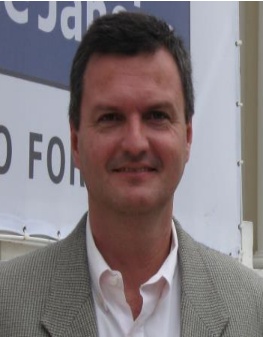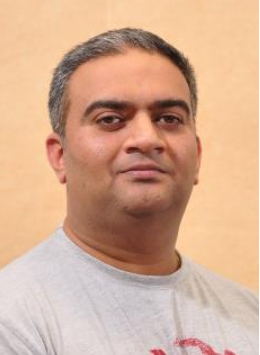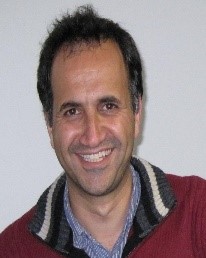报告时间:2025年8月6日(星期三)9:00—11:30
报告地点:机械馆J3
报告专家1:Marcelo A. Savi(巴西里约热内卢联邦大学)
报告题目:Nonlinear Dynamics, Chaos and Control of Smart Systems
报告人简介:

Marcelo A. Savi is Ph.D. in Mechanical Engineering and Professor at Federal University of Rio de Janeiro (COPPE - Mechanical Engineering) being the Head of the Centerfor Nonlinear Mechanics. He has published over 550 journal and conference papers, 5 books and about 19 book chapters. Awards and distinctions were received including: UFRJ solemn tribute to the most influential researchers in the world (Top 2% - based on PLOS Biology publication); COPPE Award Giulio Massarani of the Academic Merit; CNPq Researcher level 1A; Scientist of Rio de Janeiro. He is actively involved as advisor of graduate and undergraduate students, summing more than 150 works. Scientific exchanges with research centers in Brazil and all over the world should be highlighted. He has administrative experience as head of department, graduate coordinator, and university committees. He is participating in committees all over the world, summing over 250 committees of public exams, PhD, MSc and undergrad. Besides, he actuates as consultant for research agencies. He serves as Editor-in-Chief of the Journal of the Brazilian Society of Mechanical Sciences and Engineering (2024-present); Associate Editor of journals including International Journal of Mechanical Sciences (2018-present), Journal of Vibration and Control (2017-present), ASME – Journal of Computational and Nonlinear Dynamics (2019- 2024), Mathematical Problems in Engineering (2018-2024), Journal of the Brazilian Society of Mechanical Sciences and Engineering (2006-2016); and member of the Executive Editorial Board of Smart Materials and Structures (2025–present). He is member of academic societies including ASME, ABCM and SBF. Research interests are related to nonlinear mechanics where it should be highlighted smart material and structures; nonlinear dynamics, chaos and control; biomechanics and ecology.
报告内容简介:Bioinspiration is a paradigm that extracts design principles from biological and natural systems. Based on that, it is possible to create systems and structures with adaptive behavior according to its environment. Smart materials have an essential importance on this idea being used as sensors and actuators that define the remarkable system characteristics. Besides this, natural rhythms are inspiring new situations and therefore, the investigation of nonlinear dynamics, chaos and control is establishing other design paradigms. The use of bioinspired smart systems is now evolving to create origami systems based on the ancient art of paper folding. Basically, the main idea of the origami is to create a three dimensional structure from a plane source. Adaptive origamis have been explored in order to produce foldable, adaptive structures that can be applied in several areas of the human knowledge. This seminar presents a general overview of nonlinear mechanics research activities related to smart bioinspired systems. The presentation discusses some smart material system applications and their multiphysical behaviors. System modeling is also presented showing interesting behaviors for potential applications. Shape memory alloy systems, origamis, mechanical energy harvesting, chaos and chaos control are some subjects presented to give a general idea of the research activities. The rich, complex dynamical response of these systems is of special concern.
报告专家2:Sumeet S. Aphale(英国阿伯丁大学)
报告题目:From Nanopositioning to Robotics: My Journey Through Control Innovation
报告人简介:
 Sumeet S. Aphale (Senior Member, IEEE; CEng) is a Professor of Electrical and Electronic Systems at the University of Aberdeen, where he leads the ARMS Research Group—short for Artificial Intelligence, Robotics, and Mechatronic Systems. He insists the acronym wasn’t just an excuse to sound cool (though it doesn’t hurt). Within the School of Engineering, he wears multiple hats—as Academic Line Manager and Research Group Leader—herding both people and projects with the grace of a cat wrangler and the patience of a zen master. His research lives at the crossroads of robotics, smart materials, nano-precision systems, and advanced control—often quite literally, as he works hands-on with soft pneumatic robots, dielectric elastomers, and other compliant actuators. From nanopositioning platforms that twitch within billionths of a meter to fault-tolerant Gough–Stewart systems that hold steady like a surgeon’s hand, his innovations span fields from scanning probe microscopy to next-gen waste collection (yes, even the future of trash looks smart).He has secured over £3.5 million in research funding and authored more than 140 peer-reviewed papers, cited upwards of 2,800 times. A frequent contributor to international conferences such as ICRAS, ICRAI, RSAE, and ICMERR, he’s also served on editorial boards for IEEE Control Systems Letters, the IEEE CSS Conference Editorial Board, and Frontiers in Mechanical Engineering. His work has earned Best Paper Awards and the Principal’s Excellence Award for Postgraduate Supervision—a distinction he holds especially close. When not tuning controllers or modeling soft robots, Sumeet enjoys tackling even more unruly systems—like the ones that exist outside the lab. He’s also fond of traveling, trying new cuisines, diving into (and writing) philosophical rabbit holes, and perfecting the underrated art of doing absolutely nothing—and doing it well.
Sumeet S. Aphale (Senior Member, IEEE; CEng) is a Professor of Electrical and Electronic Systems at the University of Aberdeen, where he leads the ARMS Research Group—short for Artificial Intelligence, Robotics, and Mechatronic Systems. He insists the acronym wasn’t just an excuse to sound cool (though it doesn’t hurt). Within the School of Engineering, he wears multiple hats—as Academic Line Manager and Research Group Leader—herding both people and projects with the grace of a cat wrangler and the patience of a zen master. His research lives at the crossroads of robotics, smart materials, nano-precision systems, and advanced control—often quite literally, as he works hands-on with soft pneumatic robots, dielectric elastomers, and other compliant actuators. From nanopositioning platforms that twitch within billionths of a meter to fault-tolerant Gough–Stewart systems that hold steady like a surgeon’s hand, his innovations span fields from scanning probe microscopy to next-gen waste collection (yes, even the future of trash looks smart).He has secured over £3.5 million in research funding and authored more than 140 peer-reviewed papers, cited upwards of 2,800 times. A frequent contributor to international conferences such as ICRAS, ICRAI, RSAE, and ICMERR, he’s also served on editorial boards for IEEE Control Systems Letters, the IEEE CSS Conference Editorial Board, and Frontiers in Mechanical Engineering. His work has earned Best Paper Awards and the Principal’s Excellence Award for Postgraduate Supervision—a distinction he holds especially close. When not tuning controllers or modeling soft robots, Sumeet enjoys tackling even more unruly systems—like the ones that exist outside the lab. He’s also fond of traveling, trying new cuisines, diving into (and writing) philosophical rabbit holes, and perfecting the underrated art of doing absolutely nothing—and doing it well.
报告内容简介:For nearly two decades, I have been captivated by the challenge of controlling nanopositioning systems— remarkable devices capable of moving matter with nanometer-level precision. These systems sit at the frontier of modern technology, and yet, they offer an almost poetic simplicity—or complexity—depending on how deep you want to dive. From behaving like textbook second-order mass-spring-damper systems to exhibiting the intricate dynamics of infinite-order resonant structures riddled with hysteresis and creep, they provide an ideal playground for control innovation. My work in this space led to the development of the now widely adopted Integral Resonant Control strategy, designed specifically to tame structural resonances. Along the way, I have devised and refined a range of hybrid control architectures for achieving both robust damping and high-accuracy tracking. While I have dabbled in shunt, robust, sliding-mode, and repetitive control, many of these proved either too delicate or too convoluted for practical deployment in this domain. Having traversed much of the landscape of traditional (integer-order) controllers, I am now exploring the frontier of fractional-order control—a powerful and still underutilized paradigm that holds transformative potential, not only for nanopositioning but for a wide array of advanced systems in science and engineering. Recently, my research has expanded into the modeling and control of both conventional and unconventional robotic systems. As I continue this journey, my focus is shifting toward new challenges in robotics—where uncertainty, flexibility, and intelligent adaptation demand even more innovative control approaches. In this talk, I will share the story of this journey: the ideas that sparked breakthroughs, the obstacles that shaped them, and the questions that continue to drive me. I will close by presenting a set of open problems in robotics where fresh perspectives are not just welcome—they are desperately needed!
报告专家3:Vahid Vaziri(英国阿伯丁大学)
报告题目:When Control Is Late or Limited: Delay and Constraint Challenges in Nonlinear Dynamics
报告人简介:

Dr Vahid Vaziri is an Associate Professor (Senior Lecturer) in School of Engineering/University of Aberdeen, where he is part of both the Centre for Applied Dynamics Research (CADR) and the Artificial Intelligence, Robotics and Mechatronic Systems group (ARMS). His research focuses on nonlinear dynamics, vibration control and experimental mechanics, especially in systems where delays, constraints or strong nonlinearities make conventional control approaches less effective. He was educated in Iran, France and the United Kingdom, and holds degrees in control engineering, complex systems and nonlinear engineering systems. Over the past fourteen years, he has published more than sixty peer-reviewed papers and has led or co-led research and development projects with a combined value exceeding £2.6 million. His work spans a broad range of applications, including drill-string dynamics, impact oscillators and self-balancing robots, often integrating mathematical modelling with experimental validation. He currently serves as a Subject Editor for Nonlinear Dynamics, Co-Chair of the European Nonlinear Oscillations Conference in 2027, and academic coordinator for postgraduate programmes in mechanical and structural engineering. His research continues to explore how real-world constraints—such as delay, friction and limited actuation—can inspire more robust and insightful control solutions.
报告内容简介:For the past decade, I have been drawn to a deceptively simple question: what happens when control arrives too late, or arrives with limitations? Whether due to time delay, actuator saturation, or the imperfections of real-world hardware, the answer is rarely straightforward. In this talk, I explore three nonlinear systems that bring this question into sharp focus. I begin with a brief look at impact oscillators, where feedback delay and coexisting attractors create rich but fragile dynamics. I then return to my earlier work on drill-strings, where rotational structures suffer from stick-slip friction and limited torque, creating a challenging control problem. Through theory and experiment, we investigated how these torsional vibrations might be suppressed despite limited control effort. The main focus of the talk is on a more recent line of work: achieving stable and responsive behaviour in self-balancing robots built from simple components. These robots operate with delayed sensing and low-cost actuators, which makes them ideal for testing what control can achieve under realistic constraints. Can we design robustness without adding complexity? What if the controller is intelligent, but the hardware is not? I will outline our modelling approach, the design of constrained sliding mode controllers, and the key experimental findings. Throughout the talk, I will return to a central theme: how delay and constraint, often seen as obstacles, can be reframed as drivers for more resilient and thoughtful control design. I will close with open questions, especially in robotics, where fresh thinking around these limitations is both urgent and welcome.


